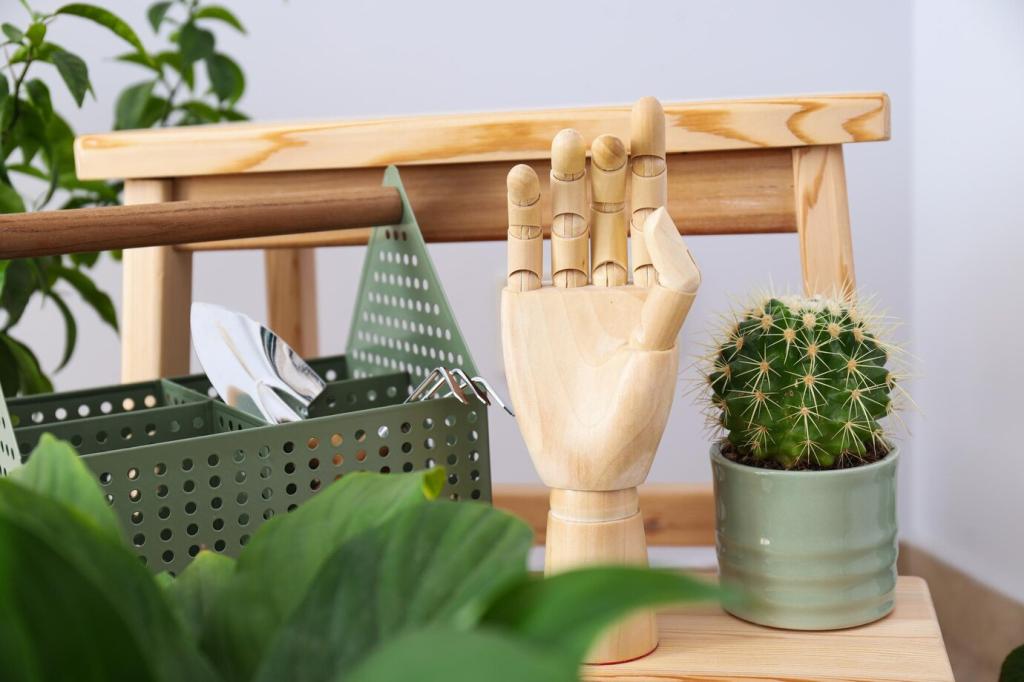The Future of Green Interior Design Techniques
Sustainable Materials and Eco-Conscious Sourcing
Advancements in material science are presenting designers with a suite of products that naturally degrade or even contribute positively to the environment after their lifecycle. Rather than relying on conventional woods, plastics, or composites, the interiors of tomorrow will feature surfaces and fixtures made from mycelium, seaweed-based composites, and agricultural byproducts. Such materials not only require less processing energy but can also be composted or repurposed at the end of their use, reducing dependency on landfills. By integrating regenerative elements—materials that renew themselves quickly and restore ecosystems—future interiors will break new ground in minimizing waste and fostering environmental harmony.

Intelligent Design for Wellness and Efficiency
Integrating Biophilic Design Principles
Biophilic design is the practice of fostering a connection to nature within built environments, boosting health, productivity, and psychological well-being. Emerging techniques go beyond simply placing plants indoors; they use natural light, organic forms, water features, and tactile materials to create immersive, regenerative spaces. The future of green interiors will further incorporate vertical gardens, living walls, and advanced daylighting models, blurring the lines between indoor and outdoor. As research continues to highlight the benefits of contact with nature, designers will prioritize these elements to craft healthier, more inspiring interiors.
Smart Technology for Eco-Efficiency
Smart homes and offices are fast becoming pivotal to green interior design. Through sensors and automated controls, green design can intelligently manage lighting, temperature, and air quality while learning and adapting to occupant routines. The next generation of interiors will use these tools to radically reduce energy and water consumption, leading to significant environmental and economic savings. Integration with renewable energy sources and responsive systems—such as dynamic shading and adaptive ventilation—will ensure interiors operate in sync with both nature and inhabitants’ needs.
Design Adaptability and Flexibility
Sustainable interiors of the future will be designed with adaptability in mind, allowing for spaces to evolve with changing needs instead of requiring energy-intensive renovations. Movable walls, modular furniture, and flexible layouts enable occupants to reconfigure rooms effortlessly, extending the usable life of a space. Designing for disassembly—making it easy to separate and reclaim materials—will further promote circularity. Such flexibility future-proofs interiors, minimizing waste and obsolescence, and supports the sustainability aims of homeowners and businesses alike.
Innovations in Energy, Water, and Resource Management
Renewable Energy Integration
Tomorrow’s green interiors will incorporate renewable energy generation directly into architectural and design elements. Innovations such as flexible solar panels, transparent photovoltaic glass, and integrated micro-wind turbines will become standard features, allowing spaces to produce much of their own energy on-site. With the growth of “energy-positive” buildings, occupants can actually contribute surplus power back to the grid. These embedded energy systems are designed to be aesthetically pleasing and seamlessly integrated into surfaces, ensuring that sustainability enhances rather than compromises interior beauty.
Water Conservation and Management
Advanced water-saving technologies will become essential components of future green interiors. Greywater recycling systems, rainwater collection, and ultra-efficient plumbing fixtures will allow for significantly reduced potable water use. Furthermore, designers are experimenting with materials and indoor landscapes that can purify air and water naturally, such as moss walls and biofiltration systems. The result is interiors that actively support water independence and resilience while promoting healthy living. As water scarcity intensifies globally, integrating these systems will help future-proof interiors against environmental stresses.
Sustainable Maintenance and Lifecycle Strategies
Green interior design will place greater emphasis on how spaces are maintained over time, ensuring that durability and sustainability persist long after initial installation. Maintenance protocols using biodegradable and non-toxic products, as well as the ability to repair, refinish, or upgrade interior elements, will be designed from the outset. Technologies like predictive analytics can signal when materials need attention, reducing the need for premature replacement. By considering the full lifecycle and fostering responsible management, designers can minimize environmental impacts and maximize the long-term value of interiors.
